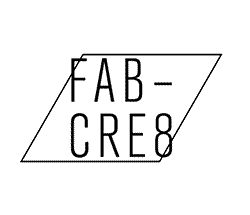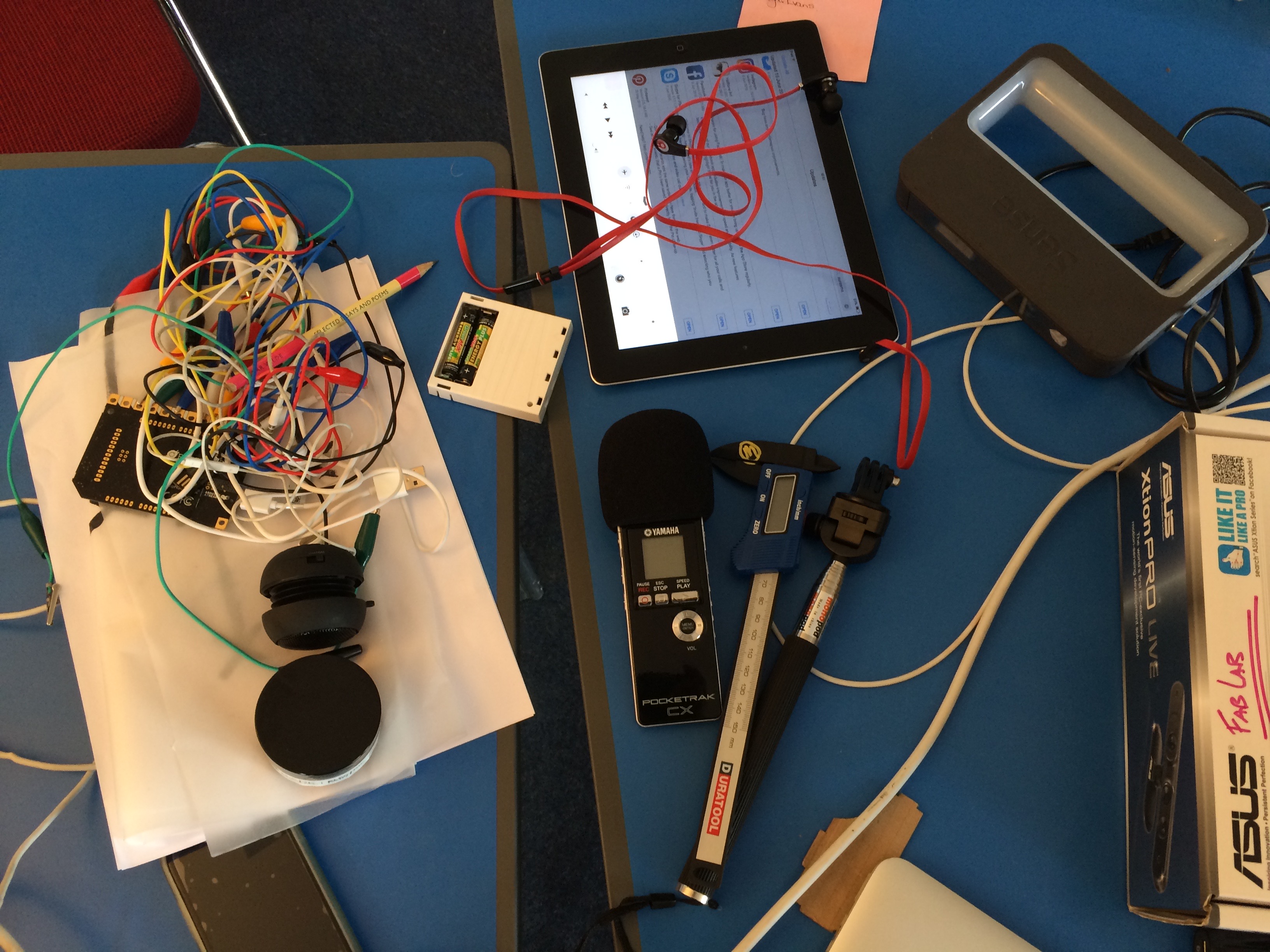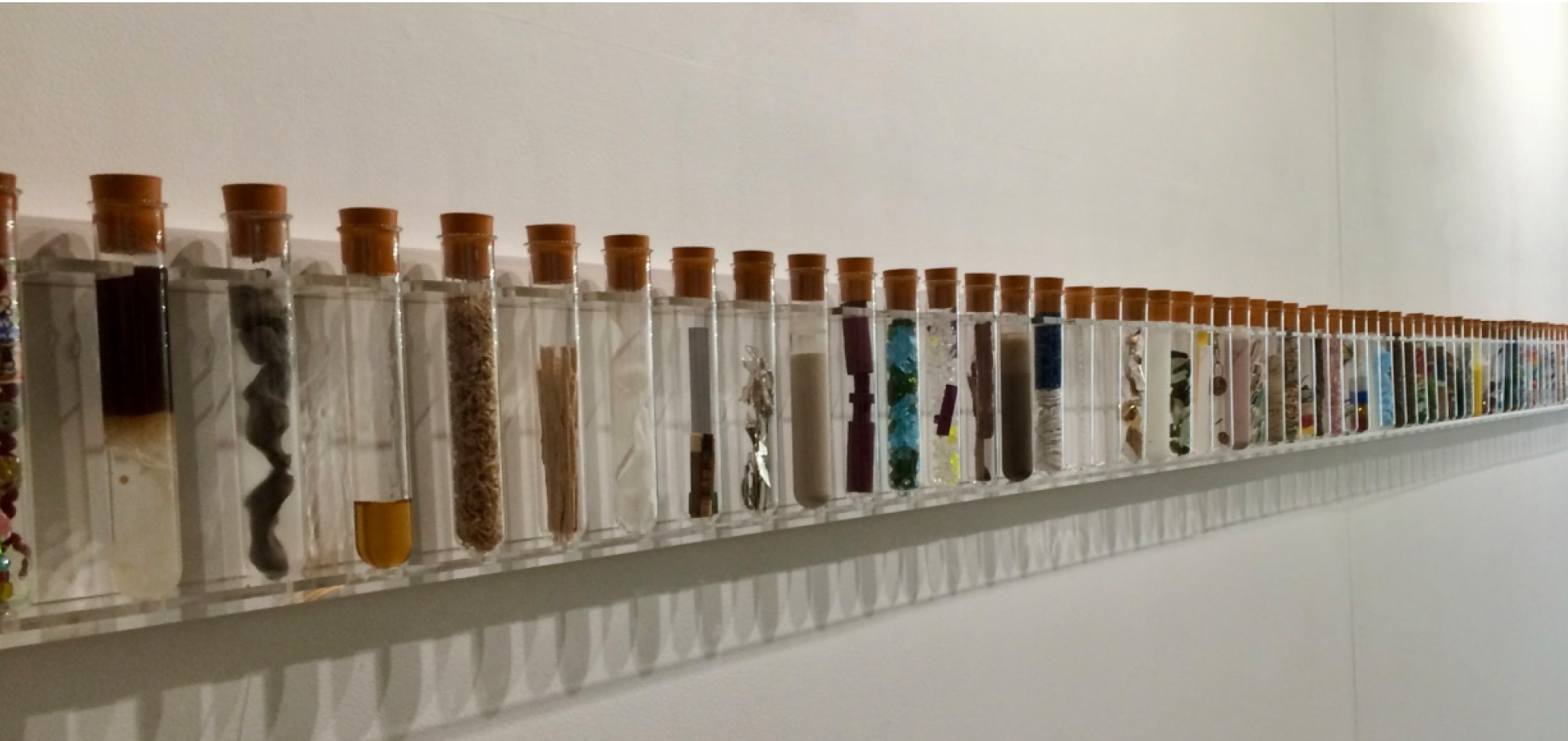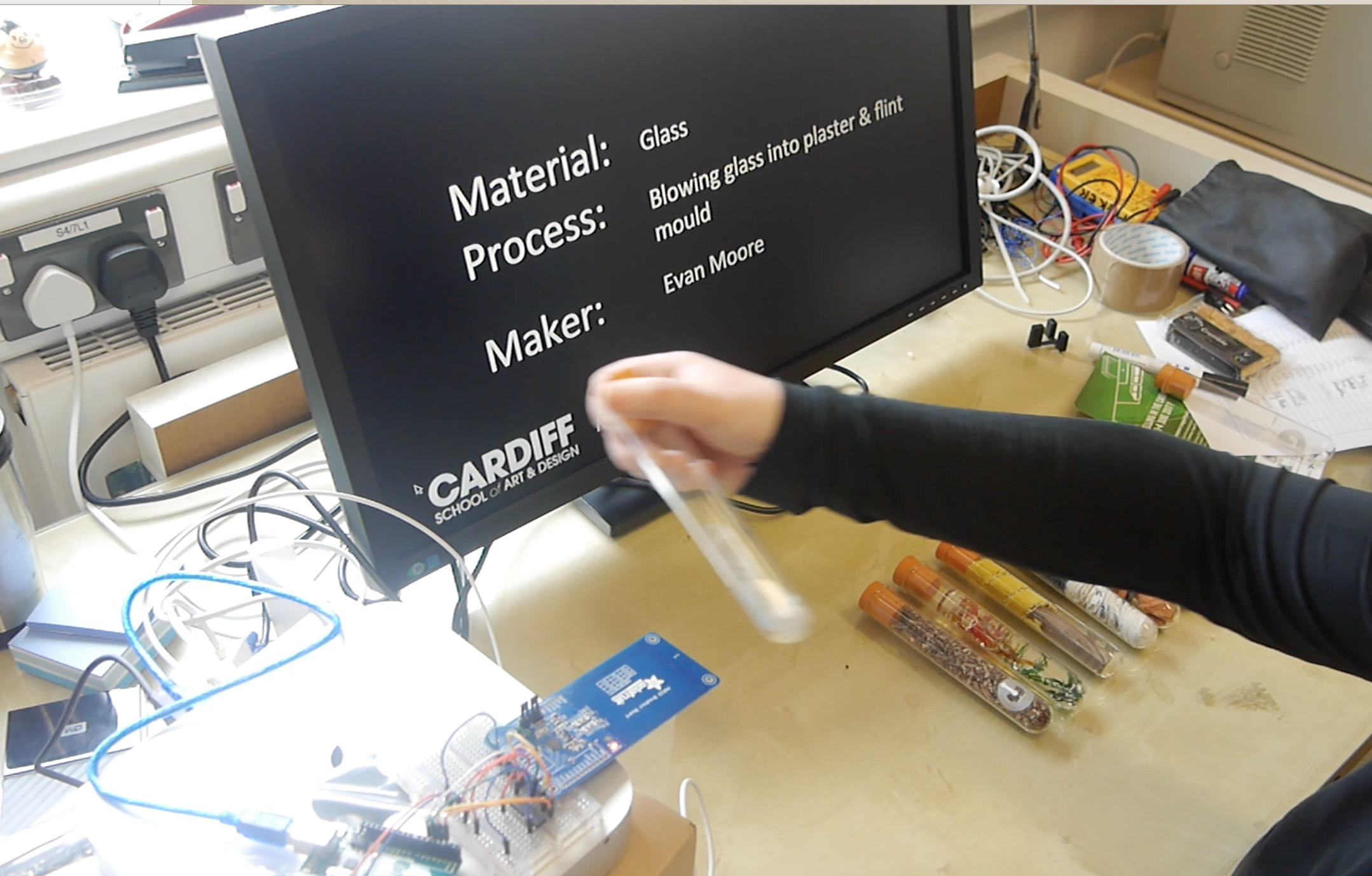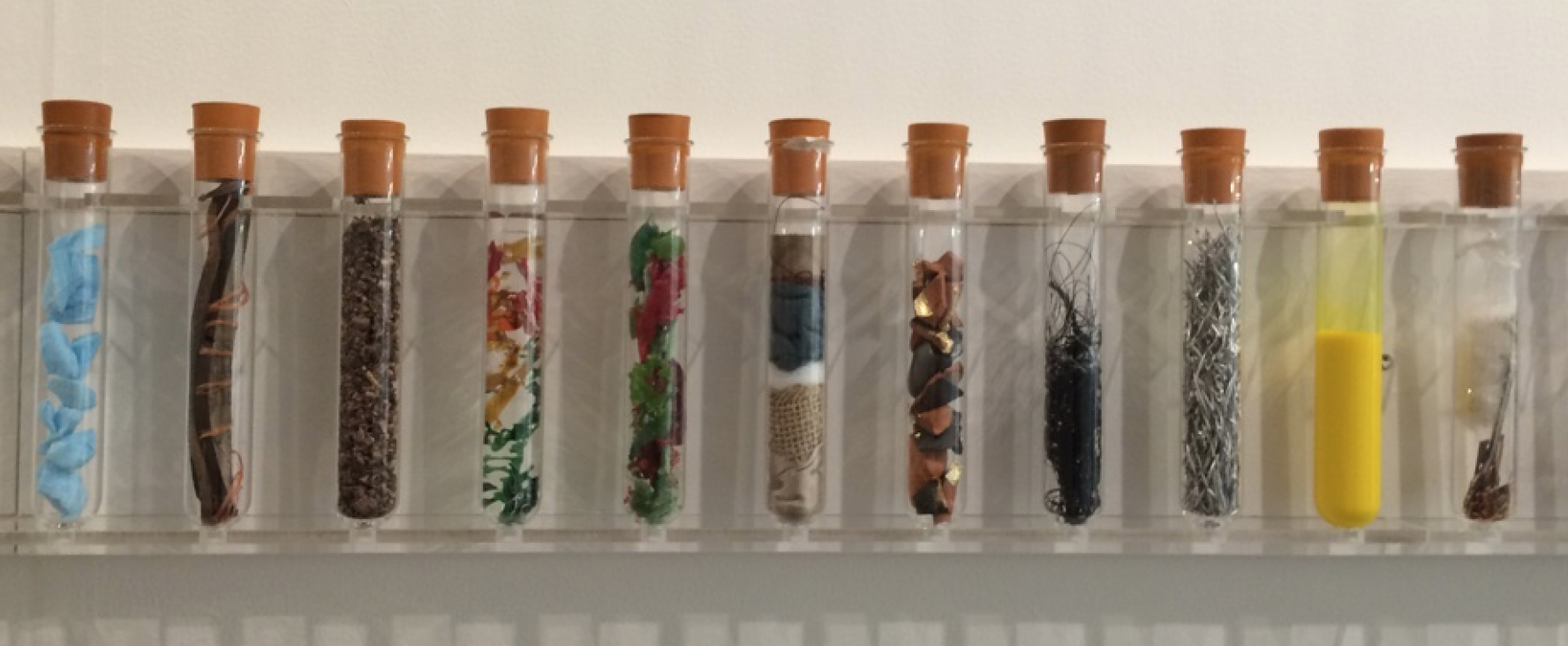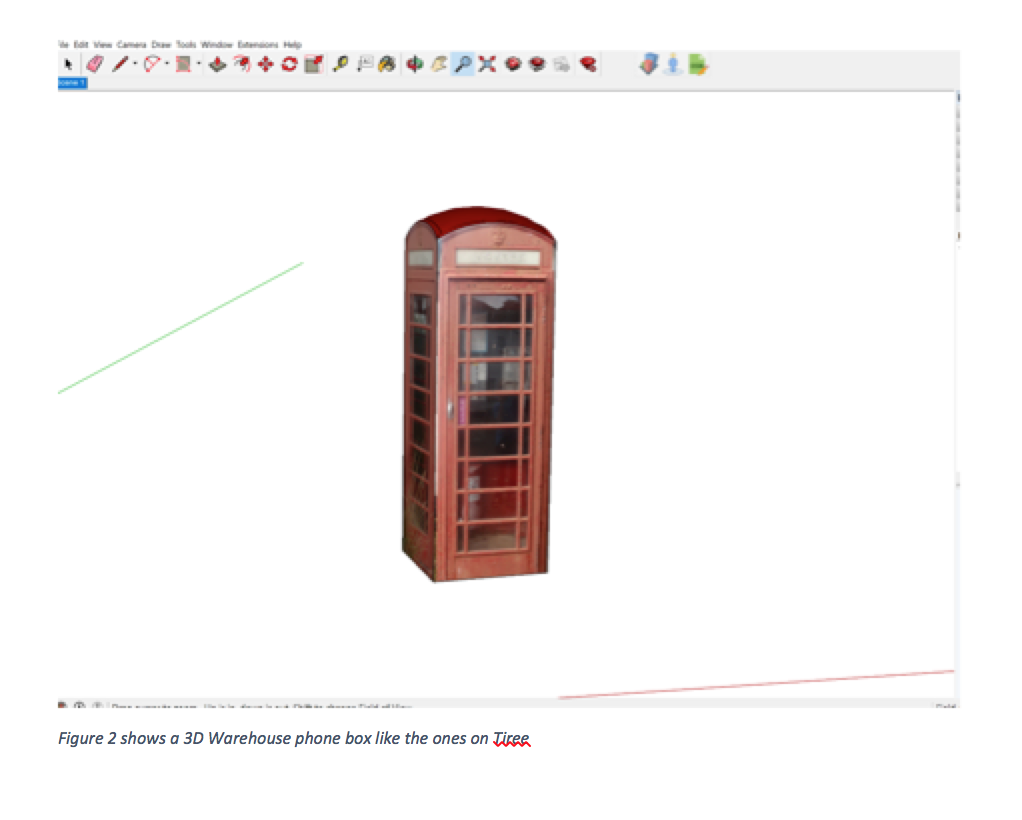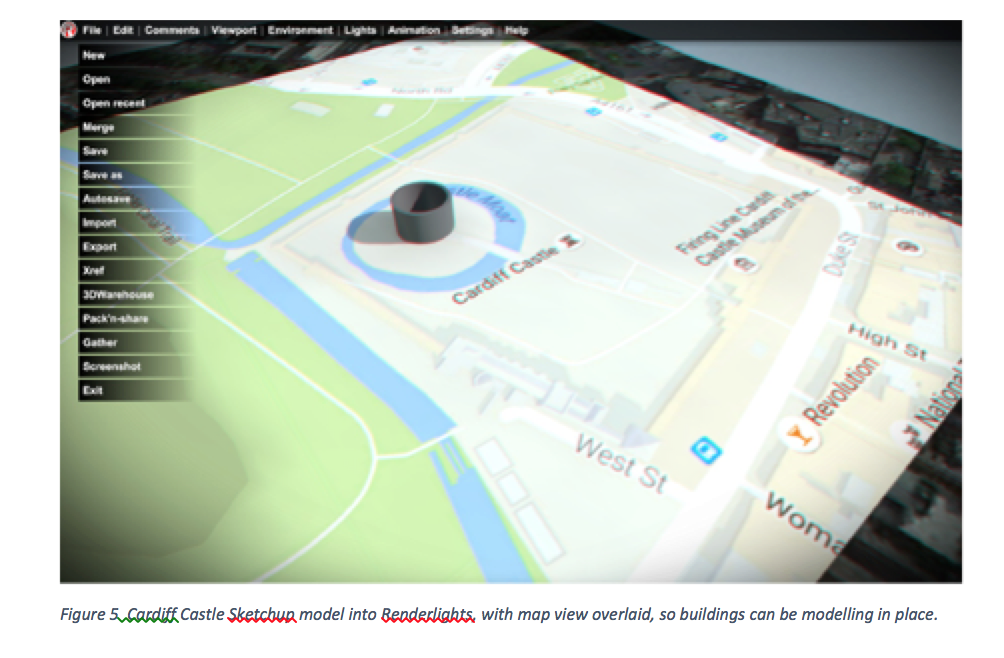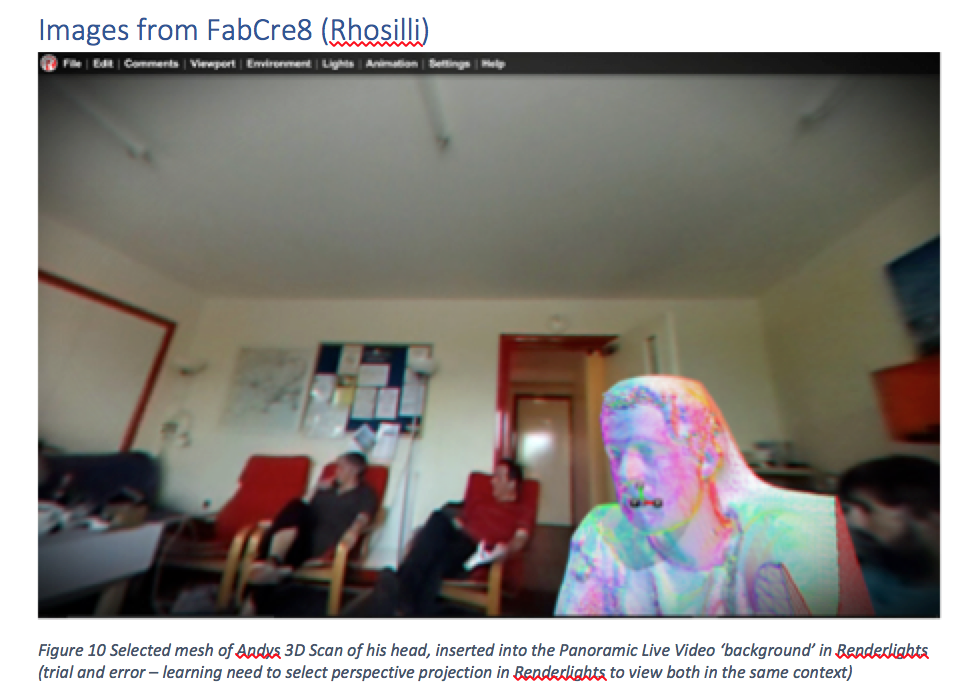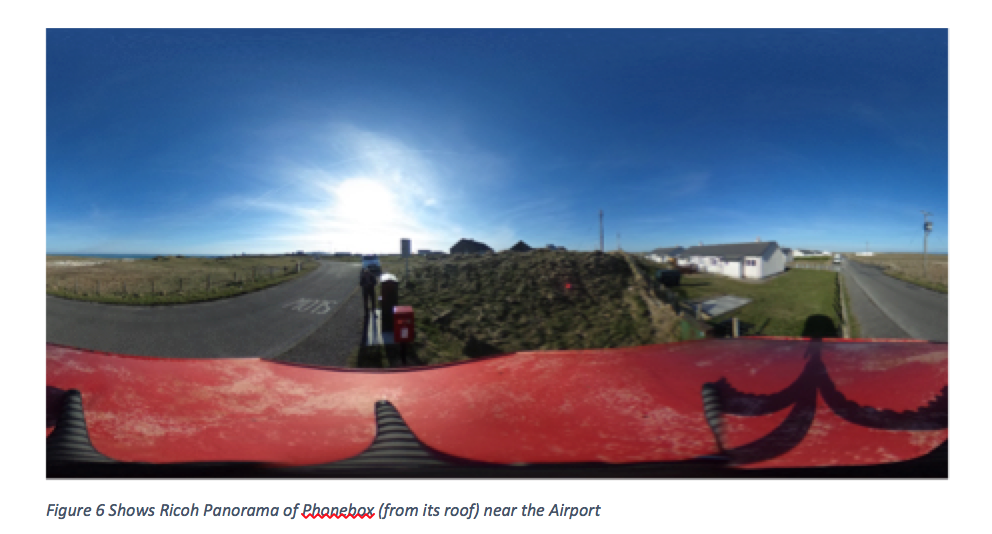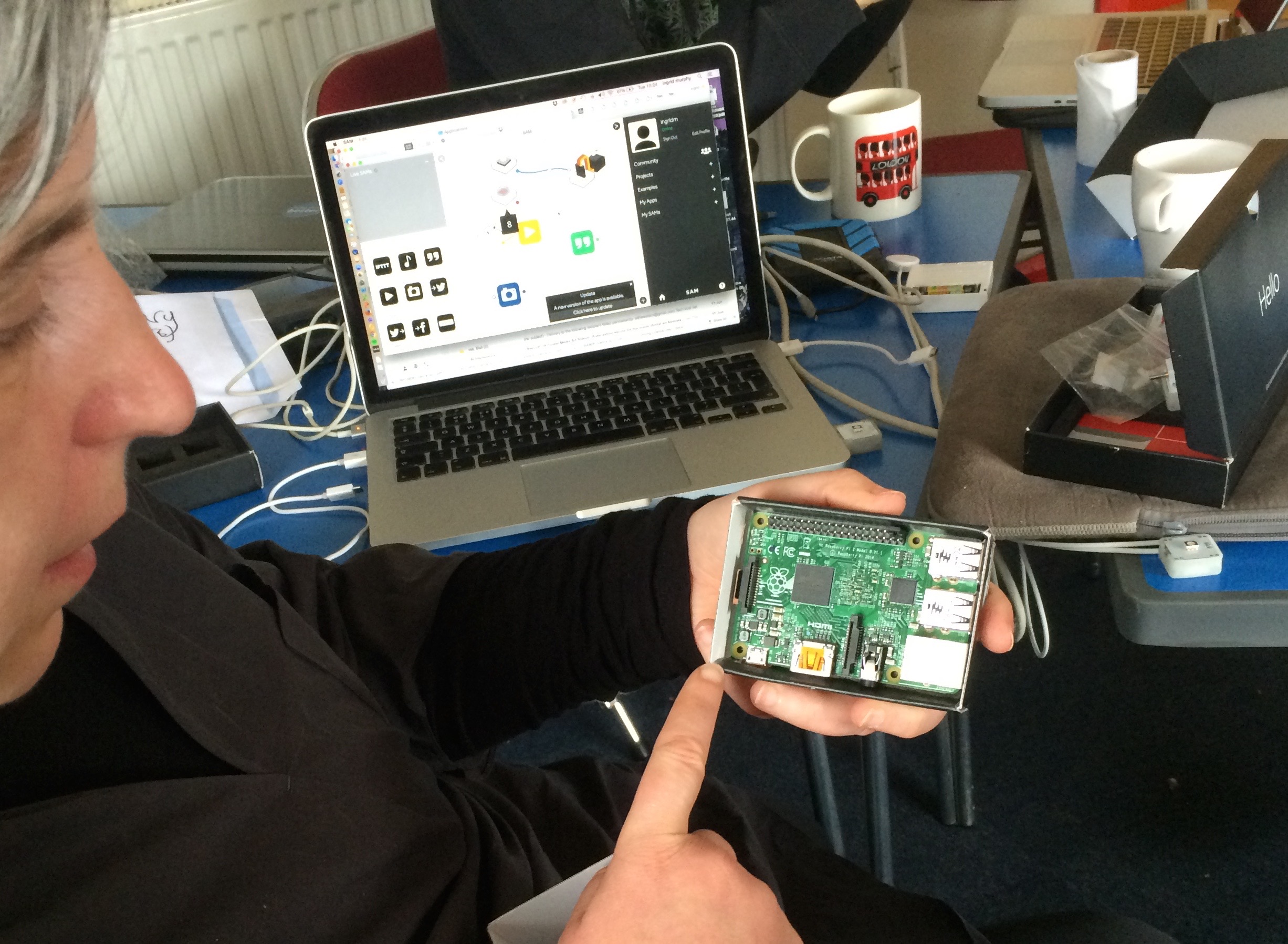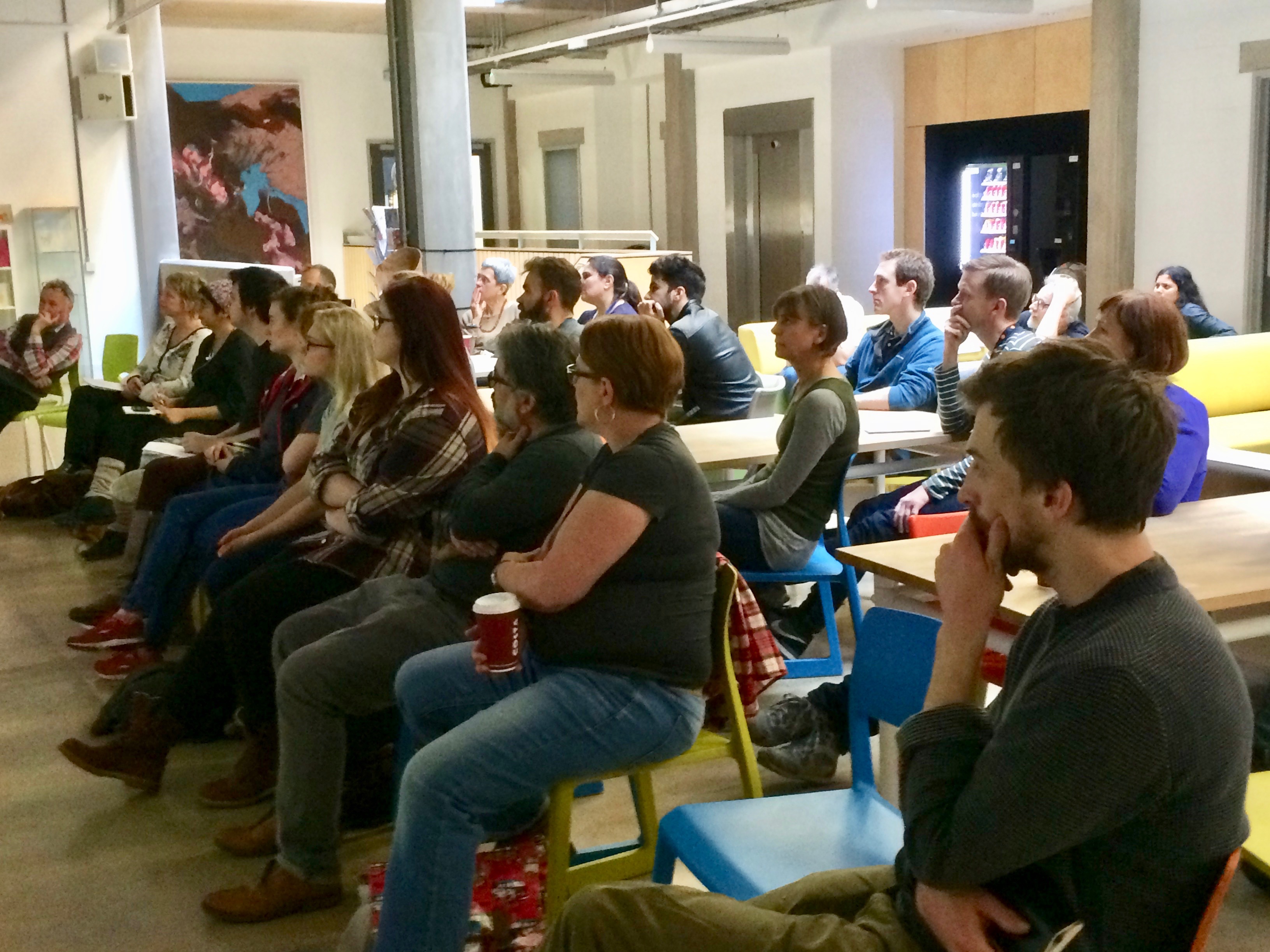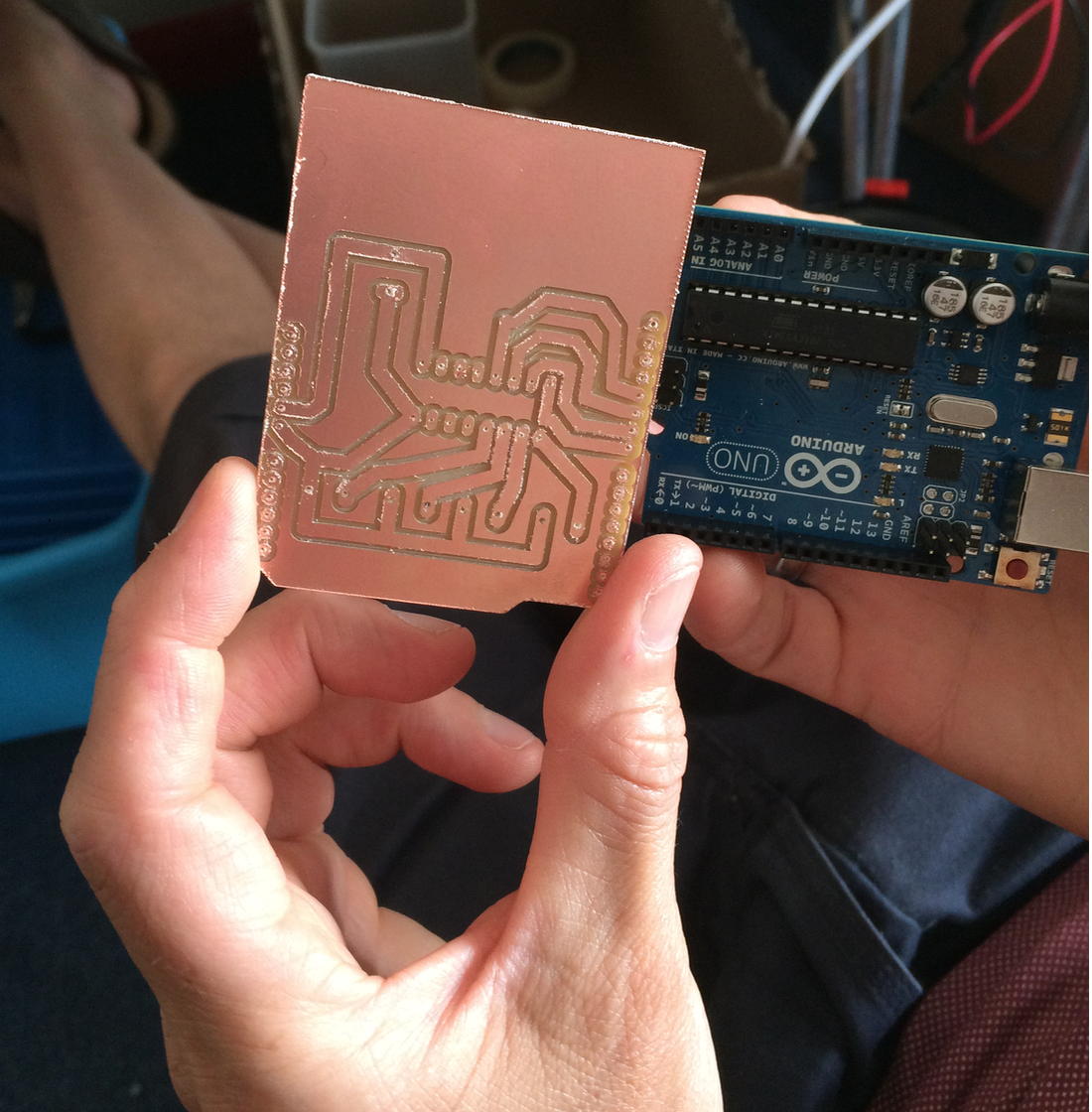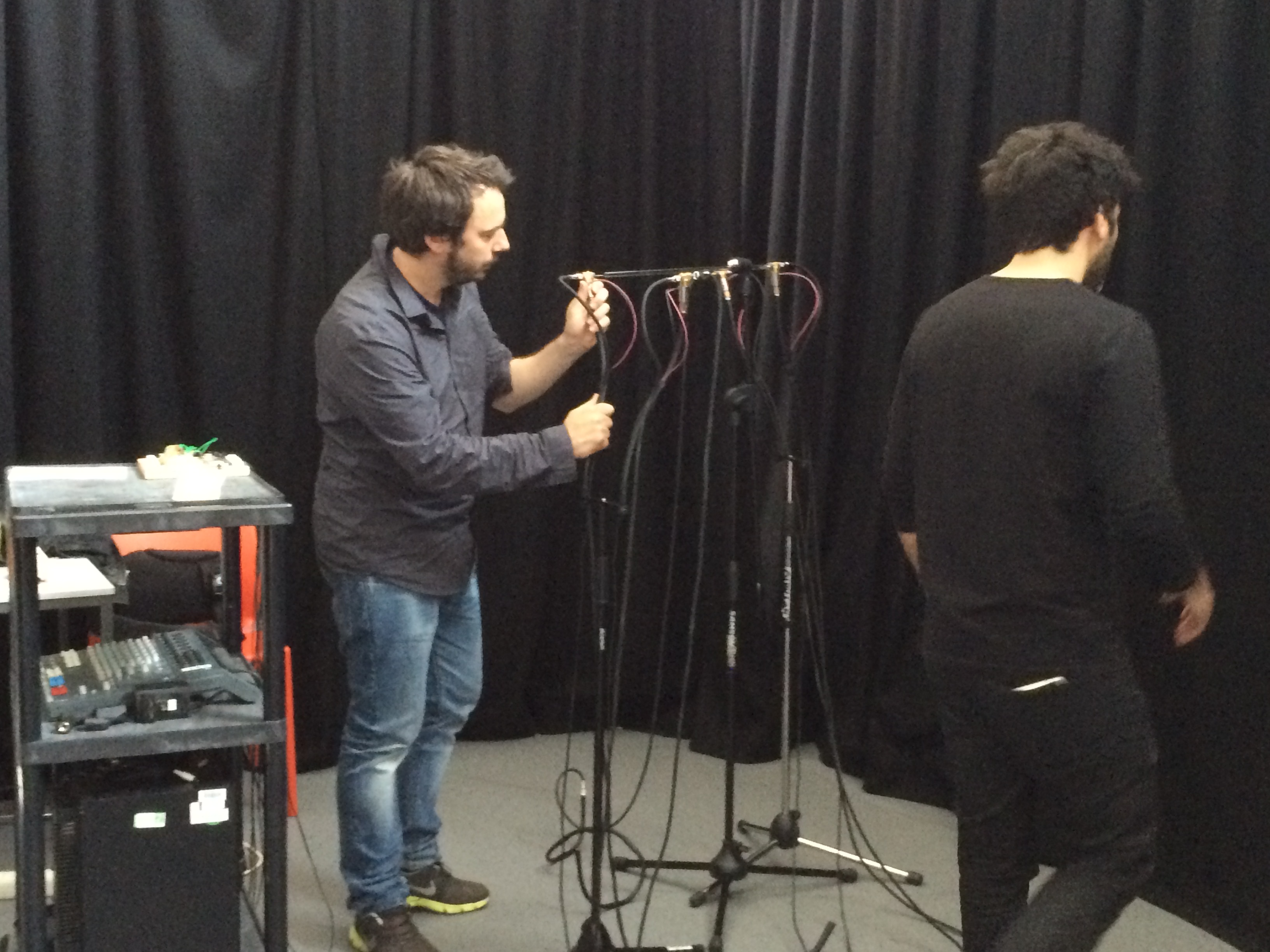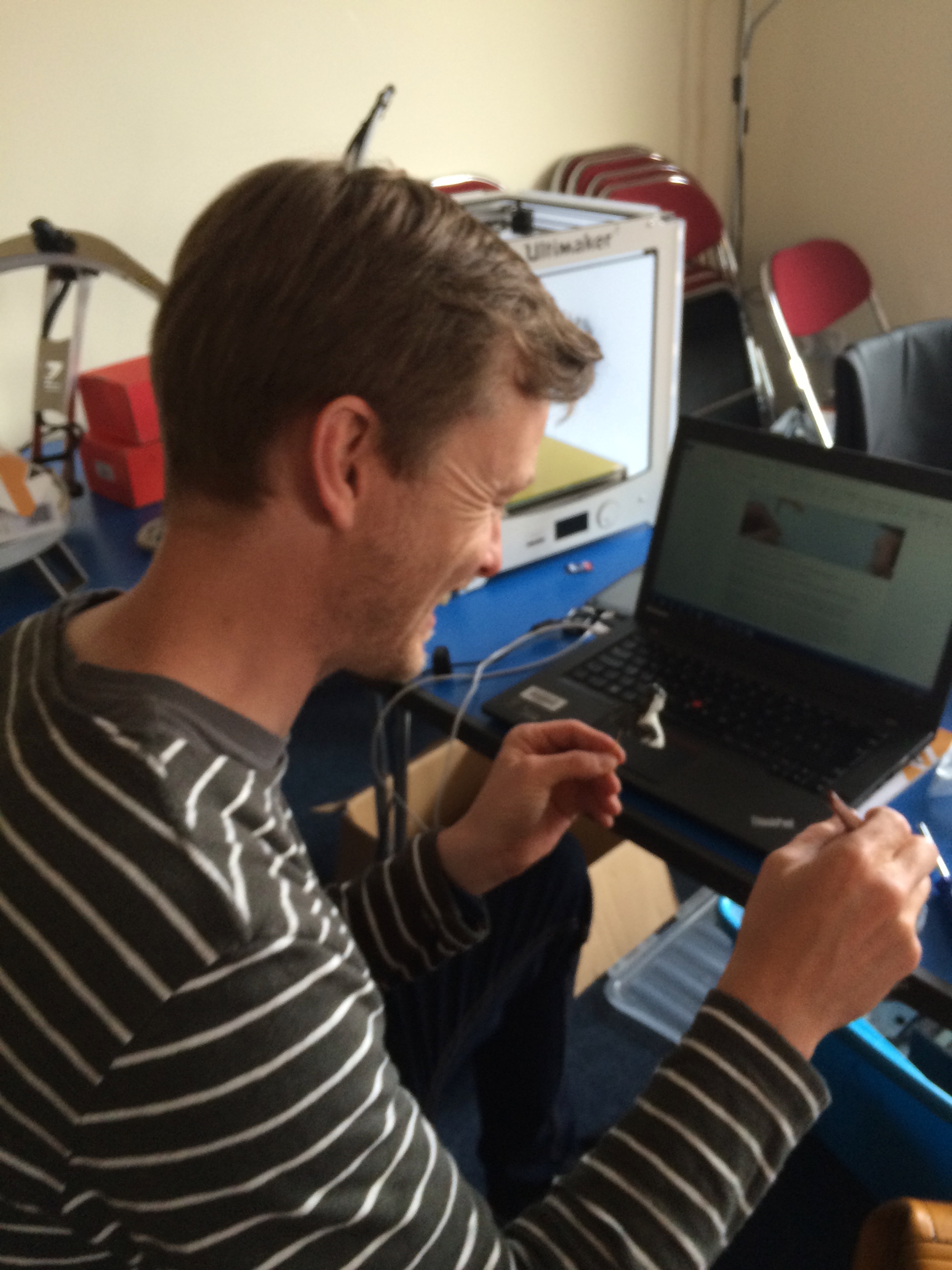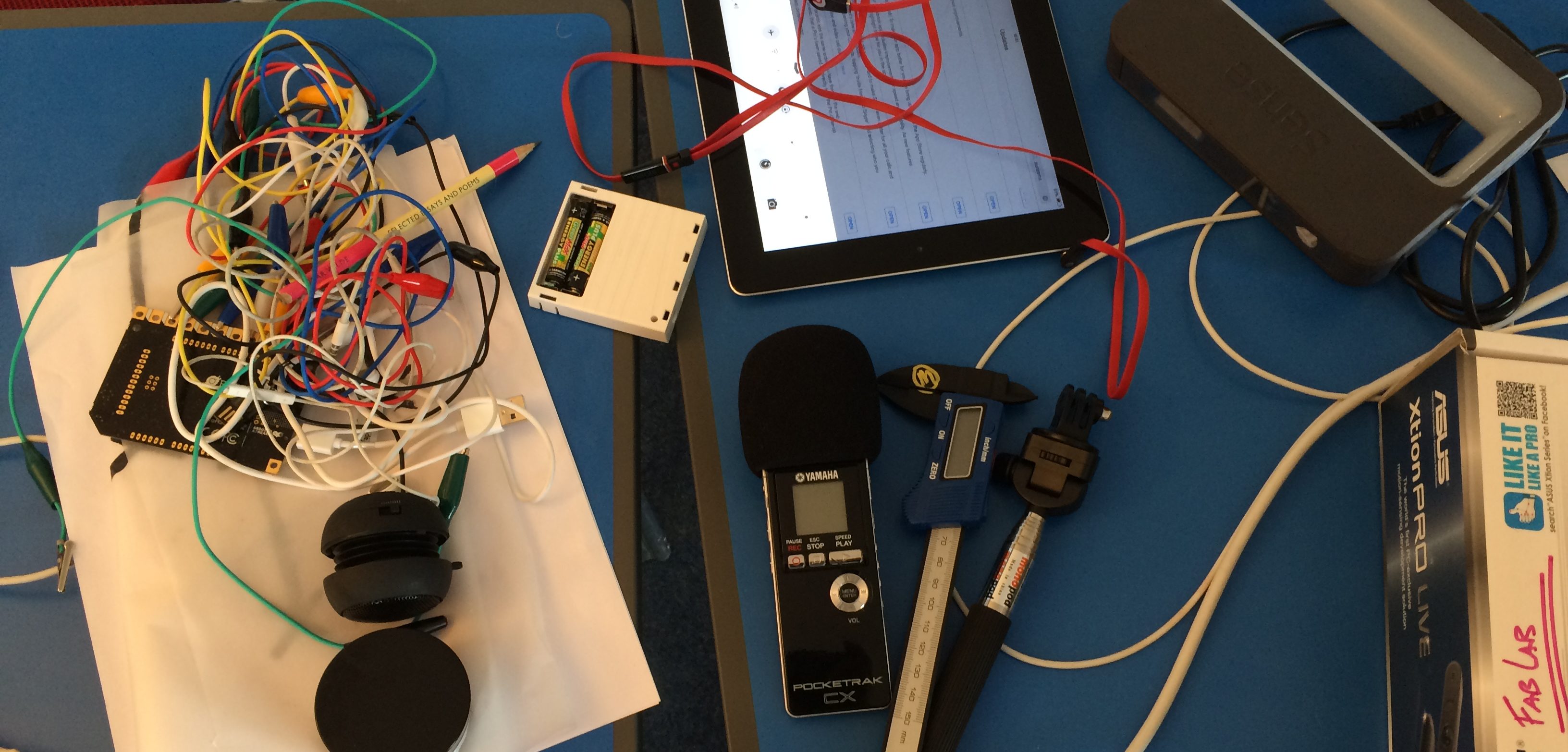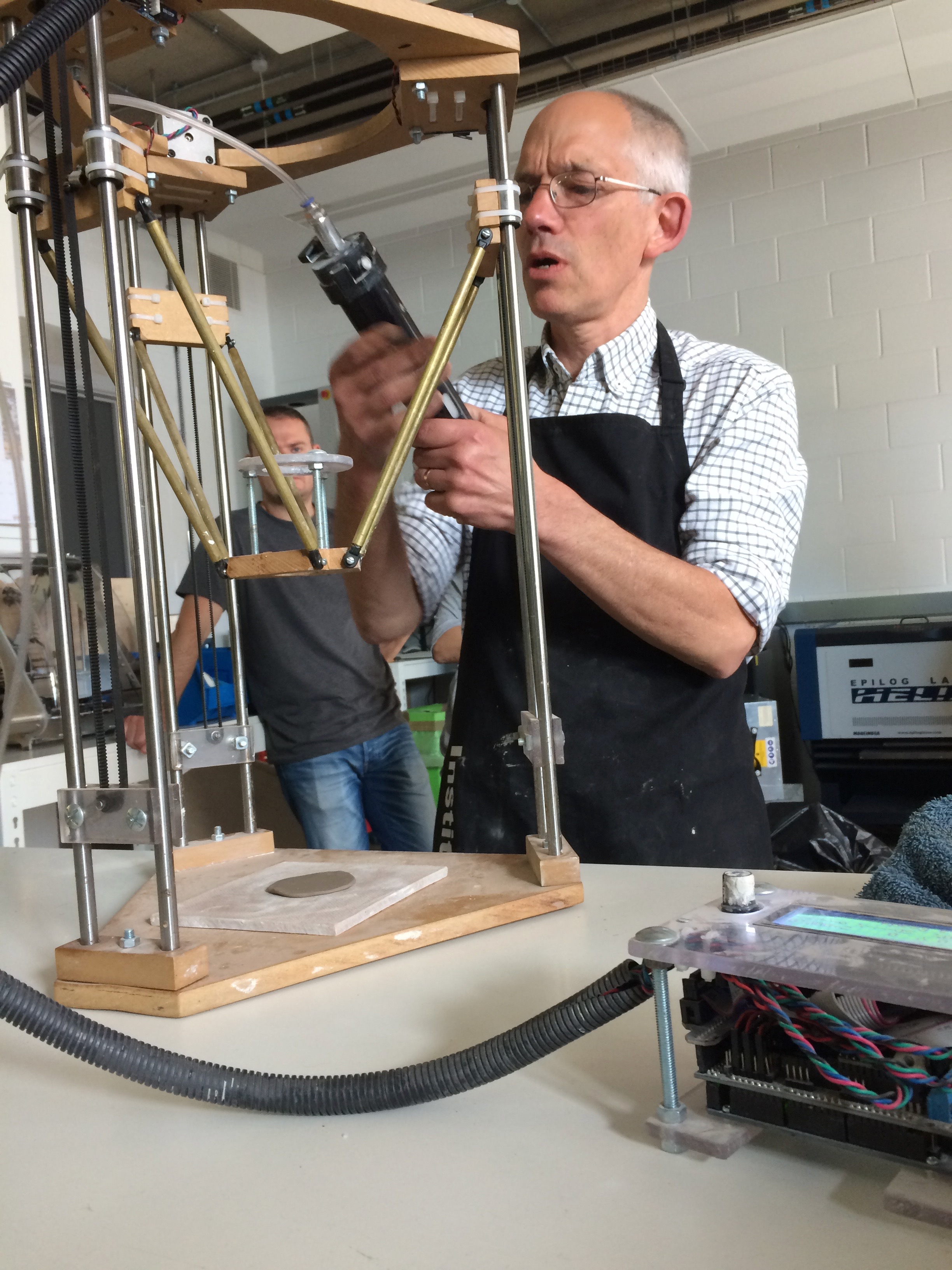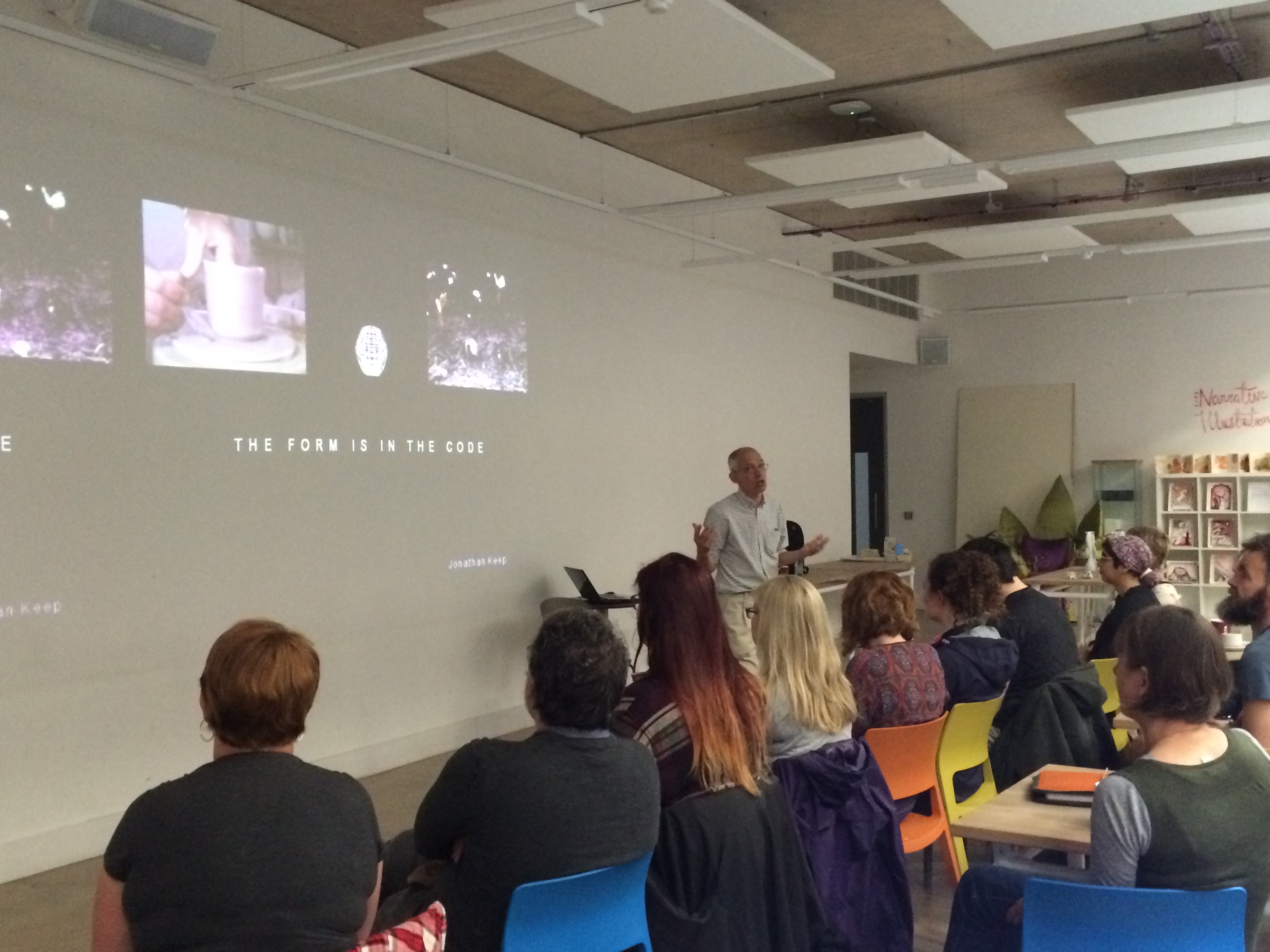Cultural Icons
Researcher : Ingrid Murphy

This is a practice based investigation into how digital forming/ fabrication processes and physical computing can be used in the creation of interactive ceramic objects. The output was a series of ceramic artefacts and accompanying film entitled ‘She Danced him into a Flat Spin’. The work used 3D scanning to create digital objects which were imported into a VR environment and reformed by the gestural manipulation of dance. The objects were then exported, 3D printed and cast in ceramics. The final figure included embedded electronics which turned the object into a functioning theremin, utilising the conductivity of the gold lustre decoration as the instrument’s aerial.
The project was funded by the Arts Council of England and initially exhibited as part of the ‘Cultural Icons’ Exhibition curated by Tessa Peters as part of the Four Sites Project, British Ceramics Biennial 2019. The work was also exhibited as part of Project SandX Art Macau 2021
References & Links
‘Cultural Icons’ Potteries Museum and Art Gallery Stoke-On-Trent Sept – November 2019
‘Cultural Icons’ Hove Museum and Gallery, November 2019- Feb 2020
Film: ‘The Making of She Danced him into a Flat Spin.’ The British Ceramics Biennial, Spode Factory Stoke on Trent Sept-October 2019
‘Cultural Icons’ Focus Day- Potteries Museum Stoke on Trent, 21st September 2019
Murphy I (2019) International Ceramics Festival, Aberystywyth 2019
https://www.britishceramicsbiennial.com/event/production-line/
Production Line workshops at BCB open to public to make replica flatbacks from works produced by featured artists. Wed- Sun 7th Sept- October 13th 2019
Watson, L & Wustemann L, (2019) ‘Conversation Pieces were Feats of Cay’ Financial Times 14th September 2019
Hess, A ( 2020) ‘Connecting with Clay’ Ceramics Review Feature Article Issue No CR302
https://www.britishceramicsbiennial.com/event/cultural-icons/
Ceramics Review Issue no 302 – Front Cover
Financial Times Article Image 14th September 2019
The Material Library
Researchers: Ingrid Murphy, Jon Pigott & Aidan Taylor
The Material Library is an RFID enabled material library that enables the user to access digital content relating to materials held within a series of test tubes. The user places the test tube in the reader tube which activates film of the material being used in context. These process based films reveal the potentials of materials to makers, designers and students in an easy accessible format.
The Syn-Tea- Sizer for Touchstone Exhibition
Researchers : Ingrid Murphy & Jon Pigott
The Syn-Tea-Sizer is a collaborative work between artists Ingrid Murphy and Jon Pigott. This is the latest in a series of works which brings together ceramic objects and physical computing.. Exploiting the conductivity of gold lustre and inlaid copper wire, the pots become capacitive touch sensors which activate a series of sound sequences when touched by the viewer. Murphy & Pigott’s aim is to create an alternative sensory experience of a familiar object or scene, in this case exploring the aurality of domestic objects strewn across a table. The sounds are inherent to the objects, created by their manipulation, these sounds and the conductive use of the decorative surface expose sensory and material characteristics of ceramic objects which are frequently overlooked. The viewer is invited to touch the objects and explore the soundscape, over time the gold will be rubbed away to reveal the while clay body beneath, leaving a visual trace of the interaction.
The relationship between touch, sound and objects is frequently explored by Murphy & Pigott to creative interactive works which explore the concept of facture, to experience or perceive an object differently may provide us with a different understanding of an object’s material and its making.
Microbial Fuel Research
Researcher Paul Granjon & Michka Melo

Paul Granjon and Michka Melo are conducting research on the topic of microbial fuel cells (MFCs), a renewable electricity production device in which electrogenic bacteria digest organic matter in an anaerobic environment. Here is an update on their project to date.















Cre8 VR
Researcher: John Counsell
Aims
1) New approaches to authoring narrative content in VR; i
2) Similar new approaches to authoring interactive VR based narrative embedded in Webpages:ii
3) Blend 3D Scanned real objects and digital models to provide exploratory interactive design development viewable in all of these different dimensions and resolutions.
4) Create interactive objects and examples for fully blended learning environments and skills development and delivery
5) Showcasing academic research such as Jay Young, Pip Lawrence and other researchers in CSAD in general and the Fablab in particular
6) Blending engagement into Museum environments, but also creating virtual museum outreaches…
Means
1) Renderlights – 1 commercial “professional” software licence
2) BS Contact – X3D web browser interaction toolset
3) BS Content Studio – Optimisation and authoring X3D VR interactions
New Approaches to Capturing and Sharing Experiences
Researcher John Counsell

Aims
1) Enhance and speed the capture of real-time activities and environments for a wide range of events inside and outdoors;
2) Enable research into new uses of this data from
a. enhancement of the limited monaural audio capture to full surround sound
b. new approaches to 360-degree live streamed HD video content creation, distribution and viewing
c. new approaches to further information capture and use of the above to enable for example measurement or commentary or narrative.
Means
The complementary technologies are:
1) Ricoh Theta S camera (trialled during the recent FabCre8 trip to Tiree – the trials included adding the output 360 degree panorama to 3D digital modelling using Renderlights software ); t
2) Ricoh R Development Kit (expected shortly, 24 hours live streaming); and
3) Intel Aero ready to fly Drone.
The Self Serving System
Researcher : Jon Pigott
The Self Serving System will emerge as something between an open source Meccano system and a Jean Tinguely sculpture. The project will seek to develop a set of open source tools and technologies based around simple electromechanical components that can be appropriated and applied to a range of projects. In the first instance, however, the system will serve to describe a its own behaviour through an intriguing and configurable sculptural assemblage. Inspired in part by Henry T. Brown’s 1868 publication 507 Mechanical Movements, this project will benefit FabLab Cardiff as well as learning, teaching and research activities within CSAD through the design and production of bespoke electronics and electromechanical devices. The technical and practical outcomes will initially form the basis for a series of CSAD workshops exploring possible creative applications and uses. The technical information, findings and resources generated by the project will be made readily available to all via an open source web resource and any resolved artefacts could be further developed for enterprise potential. Outcomes will be disseminated via events, conferences and journals detailed below.
For more information on Jon’s research visit www.sonicmarbles.co.uk
Skin-Air ceraMic
Researchers : Ingrid Murphy, Alexandros Kontogeorgakopoulos &Odysseus Klissouras
The present project concerns the research in the design and the fabrication of aerophone musical instruments from ceramic material using contemporary computer-based technologies.
Those instruments will be developed by digital fabrication techniques in the FabLab and designed with by an algorithmic code-based approach. Ideas and approaches originating for the computational crafts will merge with concepts and techniques coming from the fields of sound and music computing and sonic arts. Research will be carried out on the following areas : 3D printing and ceramics, algorithmic design of aerophones, musical instruments performance.
The objective of this research is to explore novel ways in designing and performing aerophones through the use of cutting edge technologies. Those novel instruments will be exhibited and performed in contemporary music context.
Skin Air is an innovative instrument that was realised in an EASTN (European Art Science and Technology Network) project residency, that took place in February 2015 at Cardiff Metropolitan University, School of Art and Design, where Odysseas Klissouras was invited by Alexandros Kontogeorgakopoulos and Olivia Kotsifa, Cardiff partners of the EASTN network and creators of FabLab Cardiff.
The project team consist of Alexandros Kontogeorgakopoulos AK (Senior Lecturer in Sonic Arts, Art/Science/Technology), Odysseus Klissouras OK(Sonic Artist), Ingrid Murphy (Academic Lead- Transdisciplinarity )
The Artist’s Hand
Researchers : Claire Curneen



The representation of the human figure in clay and its resonance within contemporary art practice has long underscored my professional practice and research. I represent the human figure on a small scale in porcelain (approx 80cm h), more recently there is an emphasis on realism, for example the gesture of the hand. When this modelled hand is analyses it is of course purely fictional and anatomically incorrect. With this in mind I am interested to explore this idea, to position the anatomical correct arm gesture with the handmade porcelain figure and analyse how this will alter the perception of the sculpture.
Using 3D anatomical scans and a variety of 3D printing methods, I exploit the scalability and versatility of digital files to create new forms which could be incorporated into traditional sculptural methods of construction
This project enables me to bring cutting edge digital technologies and new materials to bear in context of figurative sculptural practice
3D Printing
Researcher : Huw Williams
The project involves exploring a range of materials for rapid manufacturing methods, mainly FDM and SLA, these materials will be used to explore new possibilities in the area. SLA techniques in particular have high potential due to their significantly better surface finish. The selected materials will provide possibilities for opening up aspects of design through materials research (i.e.: conductive, magnetic and flexible materials).
The objective is to create more knowledge in the field of emerging materials for rapid (digital) manufacturing and open up possibilities for undiscovered art and design uses.
Several experimental materials, such as conductive and magnetic characteristics open up the possibility for electronic, mechanical and flexible designs to be made. The high print quality of the Form 2 printer opens up the possibilities even further.
With the addition of electroplating techniques, more realistic prototypes, models and installations can be produced. The process adds a (more) realistic look, feel and use to many designs. Copper plating conductive material can create a prototype of an actual complex part, but using new and experimental processes.
Game | Lan (Local Area Network)
Researchers : Alexandros Kontogeorgakopoulos , Olivia Kotsifa
The present project concerns the research in the design and the fabrication of very small, elegant simple to use embedded digital musical instruments. The scope is to design a small orchestra similar to a Gamelan Orchestra and explore it as a medium for social interaction . The percussion-type instruments will be plug-and-play and easy to use and explore them creatively without necessarily any musical background.
Research from a range of fields shows the importance of music in our everyday life and wellbeing, its therapeutic values for all ages as well as the importance of technology in music listening nowadays (Theofilou, 2015) (the Guardian, 2016) (Croom, 2015) (Knox and MacDonald, 2015).
The social interaction however, of an inexperienced music performer – orchestras, bands etc, is what this research will be mostly focused on (D’Ausilio et al., 2015). Open designs of embedded musical instruments, allow the DIY fabrication and customisation to fit the performer’s needs. Easy to fabricate, easy to play, these musical instruments can form an orchestra of people who do not necessarily need to know how to read music. Can this new platform help people to consider performing music and being part of an orchestra? Easily accessible by the public, the Fab Labs around the world will play a significant role in contributing to this repository of open designs.
One could download their instrument, customise it and fabricate most of its parts in a local Fab Lab. This is a way
to have easily accessible musical instruments for a global jamming session. This would form the basis of a successor project.
The digital component will be based on a brand new embedded platform for low-latency interactive audio called
Bella designed in the the centre for digital music in Queen Mary University of London
( http://c4dm.eecs.qmul.ac.uk/ ). It is an emerging technology which could revolutionise embedded interactive audio and media practice in a similar way that the Arduino and Raspberry Pi did in the past decade. The advantage is the higher performance for audio and sensor processing, the graphic programming through Pure Data language, and the availability of many audio input/outputs.
Networked Motorised Objects : IOT
Researcher : Paul Granjon

Assessing the potential of recently available technology for “Internet of things” applications in autonomous power situations. The technologies are Arduino Makr 100, Raspberry Pi 3 Model B, microbial fuel cells, supercapacitors and modular solar cells.
The exercise will be directed towards the construction of a networked motorised object containing a camera, sensors, speaker and motors.
The objective is to understand the technical feasibility and accessibility of the technologies, to assess their suitability for future projects, and to share the knowledge gained.
The research continues work I have done since 2011 where some of my artworks and interventions are partially powered by sustainable sources, a dimension I am keen to include with increased emphasis in future works. The IOT aspect is a field I have not explored yet and would like to gain proficiency in. For example, I would like to be able to remotely access artworks so as to adjust their program, or give visitors/users a remote interface with the object. The object itself is a development of a recent robotic artwork using telepresence.
In an open-source spirit, the results will be made available to Fab Lab and wider communities.
|
|
